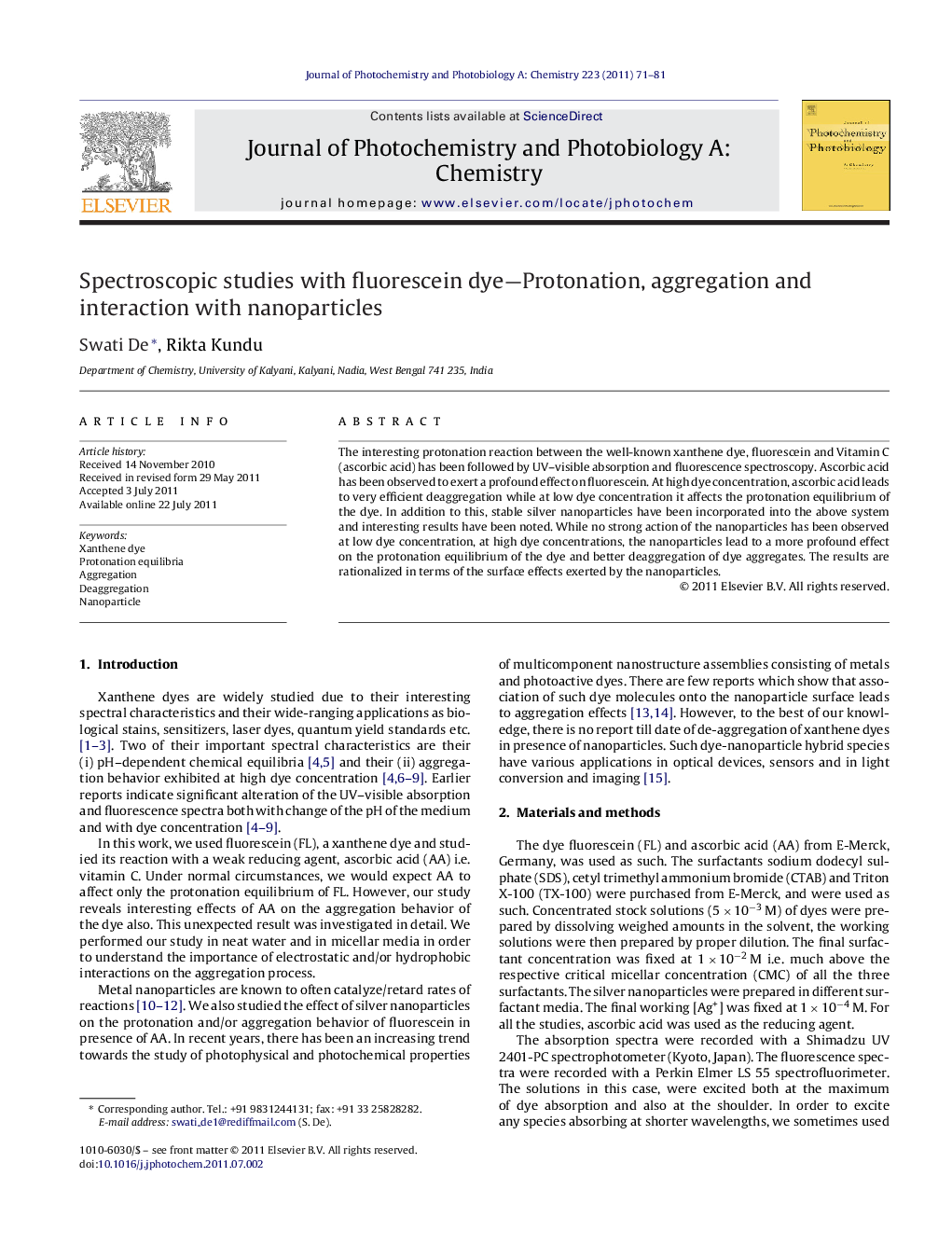| Article ID | Journal | Published Year | Pages | File Type |
|---|---|---|---|---|
| 27244 | Journal of Photochemistry and Photobiology A: Chemistry | 2011 | 11 Pages |
The interesting protonation reaction between the well-known xanthene dye, fluorescein and Vitamin C (ascorbic acid) has been followed by UV–visible absorption and fluorescence spectroscopy. Ascorbic acid has been observed to exert a profound effect on fluorescein. At high dye concentration, ascorbic acid leads to very efficient deaggregation while at low dye concentration it affects the protonation equilibrium of the dye. In addition to this, stable silver nanoparticles have been incorporated into the above system and interesting results have been noted. While no strong action of the nanoparticles has been observed at low dye concentration, at high dye concentrations, the nanoparticles lead to a more profound effect on the protonation equilibrium of the dye and better deaggregation of dye aggregates. The results are rationalized in terms of the surface effects exerted by the nanoparticles.
► Spectroscoping probing of fluorescein–ascorbic acid interaction. ► Significant effect exerted by micellar media. ► Ascorbic acid causes dye de-aggregation at high dye concentrations. ► Silver nanoparticles quench dye fluorescence. ► Silver nanoparticles also lead to faster dye de-aggregation.
